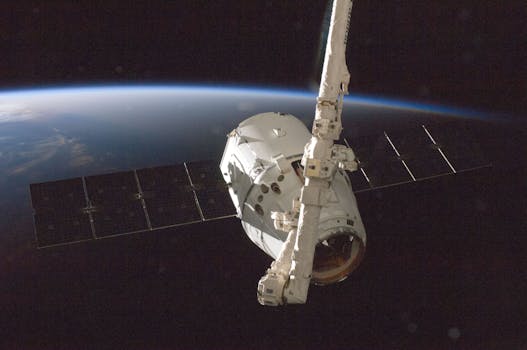
LEO satellites are at the forefront of a revolution in global connectivity, providing faster and more reliable connections than ever before. With their low latency and high-speed data transfer capabilities, LEO satellites are poised to transform the way we communicate and access information. At the heart of this revolution is the Focus Keyword: LEO satellites, which are being launched into orbit at an unprecedented rate, with companies like SpaceX, Amazon, and OneWeb leading the charge.
The key to the success of LEO satellites lies in their ability to provide low-latency connections, making them ideal for real-time applications such as video streaming, online gaming, and virtual reality. This is achieved through the use of advanced propulsion systems, which enable the satellites to maintain a stable orbit and ensure consistent connectivity. Furthermore, LEO satellites are being designed to be more compact and lightweight, reducing the cost of launch and making them more accessible to a wider range of users.
The Benefits of LEO Satellites
One of the primary benefits of LEO satellites is their ability to provide global coverage, reaching areas where traditional fiber-optic cables and cellular networks are not available. This makes them an ideal solution for remote communities, emergency responders, and military personnel, who require reliable and secure connections in the field. Additionally, LEO satellites can provide backup connectivity during natural disasters or network outages, ensuring that critical communications remain online.
Another significant advantage of LEO satellites is their potential to enable the Internet of Things (IoT), which relies on low-latency and high-speed connections to facilitate real-time data exchange between devices. With LEO satellites, IoT devices can communicate seamlessly, enabling a wide range of applications, from smart cities to industrial automation. Moreover, LEO satellites can provide precise navigation and timing signals, which are essential for autonomous vehicles, precision agriculture, and other applications that require accurate locationing.
Challenges and Limitations
Despite the many benefits of LEO satellites, there are also several challenges and limitations that must be addressed. One of the primary concerns is the risk of congestion in the orbital environment, as thousands of new satellites are launched into orbit. This can lead to increased interference, collisions, and other safety risks, which must be mitigated through careful planning and regulation. Furthermore, the high cost of launching and operating LEO satellites can be a significant barrier to entry, limiting access to these technologies for smaller companies and individuals.
Another challenge facing the LEO satellite industry is the need for standardized protocols and interfaces, which can facilitate seamless communication between different satellite systems and ground-based networks. This requires collaboration and cooperation between industry stakeholders, regulatory bodies, and standards organizations, to ensure that LEO satellites can integrate smoothly into existing telecommunications infrastructure. Moreover, the environmental impact of LEO satellites must be carefully considered, as the launch and operation of these satellites can generate significant amounts of debris and pollution.
Future Developments and Applications
As the LEO satellite industry continues to evolve, we can expect to see a wide range of new developments and applications emerge. One area of significant interest is the use of LEO satellites for Earth observation, which can provide high-resolution imagery and data for applications such as environmental monitoring, crop management, and disaster response. Additionally, LEO satellites can enable new forms of space-based astronomy, allowing scientists to study the universe in unprecedented detail.
Another exciting area of development is the integration of LEO satellites with other emerging technologies, such as 5G networks, artificial intelligence, and blockchain. This can enable a wide range of innovative applications, from smart cities to autonomous transportation systems, which can transform the way we live and work. Furthermore, the use of LEO satellites for space-based manufacturing and production can enable the creation of new materials and products, which can be used to support a wide range of industries and applications.
In conclusion, LEO satellites are transforming the way we communicate and access information, offering faster and more reliable connections than ever before. As the industry continues to evolve, we can expect to see a wide range of new developments and applications emerge, from Earth observation to space-based astronomy and beyond.





